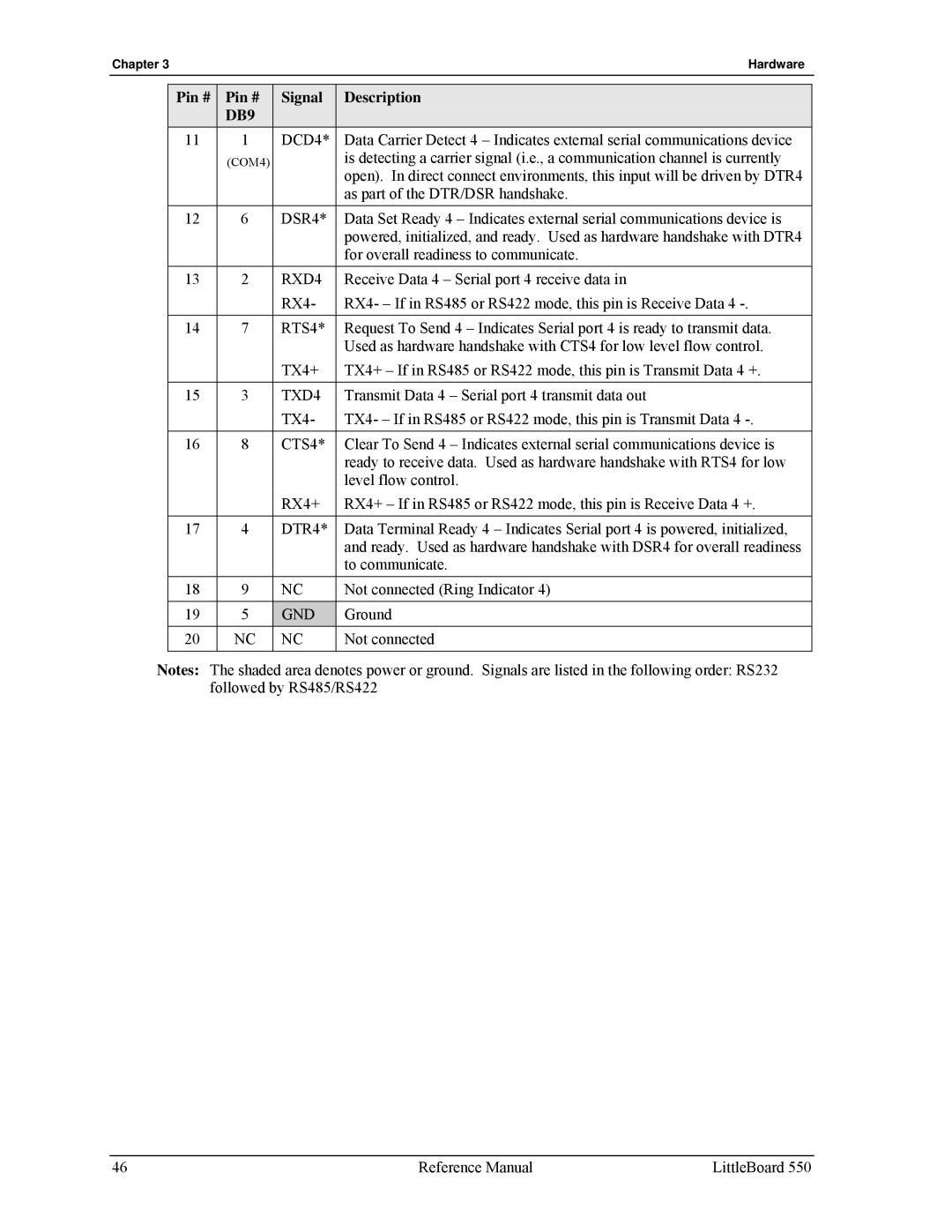Chapter 3 | Hardware |
Pin # | Pin # | Signal | Description |
| DB9 |
|
|
11 | 1 | DCD4* | Data Carrier Detect 4 – Indicates external serial communications device |
| (COM4) |
| is detecting a carrier signal (i.e., a communication channel is currently |
|
|
| open). In direct connect environments, this input will be driven by DTR4 |
|
|
| as part of the DTR/DSR handshake. |
12 | 6 | DSR4* | Data Set Ready 4 – Indicates external serial communications device is |
|
|
| powered, initialized, and ready. Used as hardware handshake with DTR4 |
|
|
| for overall readiness to communicate. |
13 | 2 | RXD4 | Receive Data 4 – Serial port 4 receive data in |
|
| RX4- | RX4- – If in RS485 or RS422 mode, this pin is Receive Data 4 |
|
|
|
|
14 | 7 | RTS4* | Request To Send 4 – Indicates Serial port 4 is ready to transmit data. |
|
|
| Used as hardware handshake with CTS4 for low level flow control. |
|
| TX4+ | TX4+ – If in RS485 or RS422 mode, this pin is Transmit Data 4 +. |
15 | 3 | TXD4 | Transmit Data 4 – Serial port 4 transmit data out |
|
| TX4- | TX4- – If in RS485 or RS422 mode, this pin is Transmit Data 4 |
16 | 8 | CTS4* | Clear To Send 4 – Indicates external serial communications device is |
|
|
| ready to receive data. Used as hardware handshake with RTS4 for low |
|
|
| level flow control. |
|
| RX4+ | RX4+ – If in RS485 or RS422 mode, this pin is Receive Data 4 +. |
|
|
|
|
17 | 4 | DTR4* | Data Terminal Ready 4 – Indicates Serial port 4 is powered, initialized, |
|
|
| and ready. Used as hardware handshake with DSR4 for overall readiness |
|
|
| to communicate. |
18 | 9 | NC | Not connected (Ring Indicator 4) |
19 | 5 | GND | Ground |
20 | NC | NC | Not connected |
|
|
|
|
Notes: The shaded area denotes power or ground. Signals are listed in the following order: RS232 followed by RS485/RS422
46 | Reference Manual | LittleBoard 550 |
